Welcome to your NCLEX reviewer and practice questions quiz for cardiovascular system disorders. This NCLEX nursing test bank tests your competence in the nursing care and management of patients with dysrhythmias, hematological disorders, hypertension, coronary artery disease, myocardial infarction, heart failure, and peripheral vascular diseases.
Cardiac Disorders Nursing Test Bank
Here are the NCLEX practice questions for cardiovascular system disorders. This nursing test bank set includes 220 NCLEX-style practice questions that cover topics like dysrhythmias, EKG interpretation, heart failure, myocardial infarction, hematologic disorders, and more. Use these questions to help you review for cardiovascular system disorders and as an alternative to Quizlet.
All questions on this set are updated to give you the most challenging questions, along with insightful rationales to reinforce learning.
Quiz Guidelines
Before you start, here are some examination guidelines and reminders you must read:
- Practice Exams: Engage with our Practice Exams to hone your skills in a supportive, low-pressure environment. These exams provide immediate feedback and explanations, helping you grasp core concepts, identify improvement areas, and build confidence in your knowledge and abilities.
- Challenge Exams: Take our Challenge Exams to test your mastery and readiness under simulated exam conditions. These exams offer a rigorous question set to assess your understanding, prepare you for actual examinations, and benchmark your performance.
- You’re given 2 minutes per item.
- For Challenge Exams, click on the “Start Quiz” button to start the quiz.
- Complete the quiz: Ensure that you answer the entire quiz. Only after you’ve answered every item will the score and rationales be shown.
- Learn from the rationales: After each quiz, click on the “View Questions” button to understand the explanation for each answer.
- Free access: Guess what? Our test banks are 100% FREE. Skip the hassle – no sign-ups or registrations here. A sincere promise from Nurseslabs: we have not and won’t ever request your credit card details or personal info for our practice questions. We’re dedicated to keeping this service accessible and cost-free, especially for our amazing students and nurses. So, take the leap and elevate your career hassle-free!
- Share your thoughts: We’d love your feedback, scores, and questions! Please share them in the comments below.
Quizzes included in this guide are:
Recommended Resources
Recommended books and resources for your NCLEX success:
Disclosure: Included below are affiliate links from Amazon at no additional cost from you. We may earn a small commission from your purchase. For more information, check out our privacy policy.
Saunders Comprehensive Review for the NCLEX-RN
Saunders Comprehensive Review for the NCLEX-RN Examination is often referred to as the best nursing exam review book ever. More than 5,700 practice questions are available in the text. Detailed test-taking strategies are provided for each question, with hints for analyzing and uncovering the correct answer option.
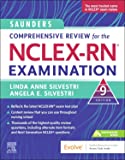
Strategies for Student Success on the Next Generation NCLEX® (NGN) Test Items
Next Generation NCLEX®-style practice questions of all types are illustrated through stand-alone case studies and unfolding case studies. NCSBN Clinical Judgment Measurement Model (NCJMM) is included throughout with case scenarios that integrate the six clinical judgment cognitive skills.
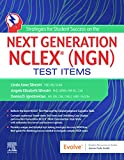
Saunders Q & A Review for the NCLEX-RN® Examination
This edition contains over 6,000 practice questions with each question containing a test-taking strategy and justifications for correct and incorrect answers to enhance review. Questions are organized according to the most recent NCLEX-RN test blueprint Client Needs and Integrated Processes. Questions are written at higher cognitive levels (applying, analyzing, synthesizing, evaluating, and creating) than those on the test itself.
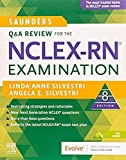
NCLEX-RN Prep Plus by Kaplan
The NCLEX-RN Prep Plus from Kaplan employs expert critical thinking techniques and targeted sample questions. This edition identifies seven types of NGN questions and explains in detail how to approach and answer each type. In addition, it provides 10 critical thinking pathways for analyzing exam questions.
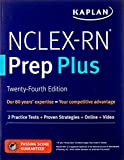
Illustrated Study Guide for the NCLEX-RN® Exam
The 10th edition of the Illustrated Study Guide for the NCLEX-RN Exam, 10th Edition. This study guide gives you a robust, visual, less-intimidating way to remember key facts. 2,500 review questions are now included on the Evolve companion website. 25 additional illustrations and mnemonics make the book more appealing than ever.
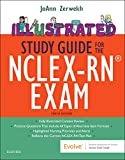
NCLEX RN Examination Prep Flashcards (2023 Edition)
NCLEX RN Exam Review FlashCards Study Guide with Practice Test Questions [Full-Color Cards] from Test Prep Books. These flashcards are ready for use, allowing you to begin studying immediately. Each flash card is color-coded for easy subject identification.
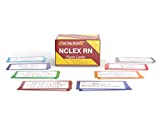
Recommended Links
An investment in knowledge pays the best interest. Keep up the pace and continue learning with these practice quizzes:
- Nursing Test Bank: Free Practice Questions UPDATED!
Our most comprehenisve and updated nursing test bank that includes over 3,500 practice questions covering a wide range of nursing topics that are absolutely free! - NCLEX Questions Nursing Test Bank and Review UPDATED!
Over 1,000+ comprehensive NCLEX practice questions covering different nursing topics. We’ve made a significant effort to provide you with the most challenging questions along with insightful rationales for each question to reinforce learning.
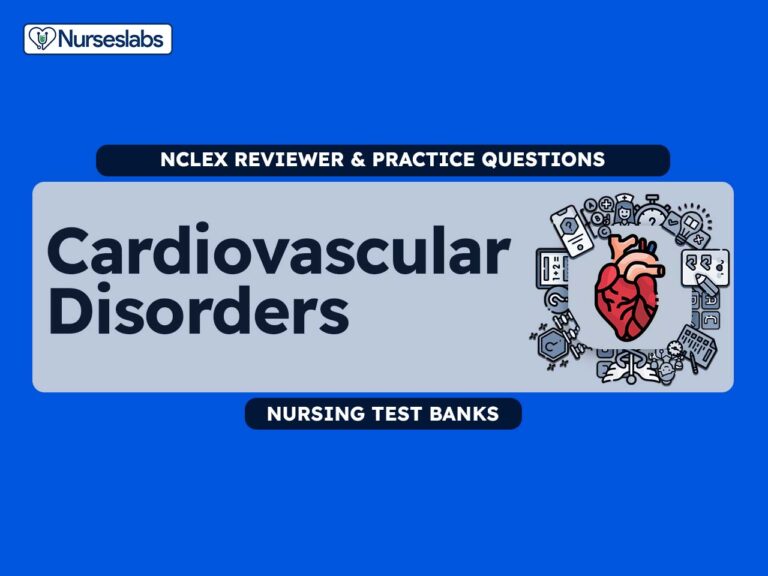
Hi, thank you for these practice NCLEX styled questions! I am currently taking the “Hypertension & Coronary Artery Disease NCLEX Practice Exam #3” and one of the rationale boxes for both the incorrect and correct answers does not seem to correlate with the question nor the answer choices. The question was asking about the most important long term goal for a hypertensive patient. I was wondering is there any way to trouble shoot this so I could receive the correlating rationales? Thank you.
Hi Kat, this has been corrected. Thank you for letting us know :) Good luck!
Thank you for letting me to do this exam I hope to do very well
Thank you.
Thank u so much for your help.. Stay safe, healthy and happy!😊
Thanks a lot i learned many thing it is helpful for us
Thank you!
Hi Matt! I am very thankful for your help. God bless and may the good Lord continue to shower you with more blessings for your generosity.
These practice tests would help me pass the NCLEX exam.
Thank you so much Matt! These practice tests have been very helpful!
Your time: 00:17:14
You have reached 50 of 50 point(s), (100%)
Average score 0%
Your score 100%
Congratulations, you have completed this quiz!
I play with this every now and then until I finally could come out with this score, am so… looking forward to one day becoming a RN. Thanks for this educative platform
Question 18 about a 56 year old lady having chest pains while climbing stairs to her friend’s house. Some other classmates and I agree that she should probably not take a nitro tablet right before climbing the stairs because she could have a significant drop in BP, get dizzy, and fall down the stairs. We are instructed to always educate the patient to sit down before taking a nitro tablet for safety and to take caution when standing after. Other than that question, these are great and go along with my current nursing exam.
Thanks for letting me do these questions
Thank you for sharing these mind juggling practice questions. I’m preparing for the NCLEX and I use this platform to gauge my understanding in various topics.
Only God almighty will reward you for this good work. Thank you! thank you!! Thank you!!! Only God knows how much you impacted positively in my study life 😭
Very challenge but good since one is forced to think critically.
I love this site. It’s intuitive and helps provide great challenging questions with in-depth rationales. That I, as a nurse educator, love reading! Great job!
Thanks so much for your kind words, Jesi!
For question no 48, I think Cardiac tamponade includes jugular vein distention decreased urine output, not increased urine output as indicated in your answers. Can you please, revisit question no 48 and give more clarification on the answers? Thank you so much. I have learned a lot in this chapter. -Nonye.
Hi Nonye, thanks for bringing this up. I have corrected the choices. Thanks again!
Question 26 on exam 4:
Correct Answer: B. Hypertrophic
Cardiac output isn’t affected by hypertrophic cardiomyopathy because the size of the ventricle remains relatively unchanged.
I thought hypertrophic cardiomyopathy leads to decreased filling (diastolic failure) which would then result in decreased stroke volume and thus decreased cardiac output?
Aspirin is an Antiplatelet drug.
Thank you so much for this!! I appreciate it so much, especially the detailed rationales. Also, I just want to note that I don’t think the Schilling test is used anymore for question 9 and 10? Just in case you want to update, but I might be wrong. Much love!!
Hello, Nitroglycerin administer during MI attack pattern is changed.
I love practicing on the questions above and the rational is completely understand.
We were taught to call for help/call code then initate CPR if we are the first person for V. Fib and someone else would bring the AED. Is that just a nursing school thing?
This question below i disagree with answer to start defib. you iniate cpr first not defib’ing the client
When ventricular fibrillation occurs in a CCU, the first person reaching the client should:
Excellent question for health student
I have enjoyed your exam Questions though I got 21/50.
Thank you so much 😊
I’m glad there’s an online free reviewer like this, I hope I still have stock knowledge for me to assess myself on taking the exam. Thank you!